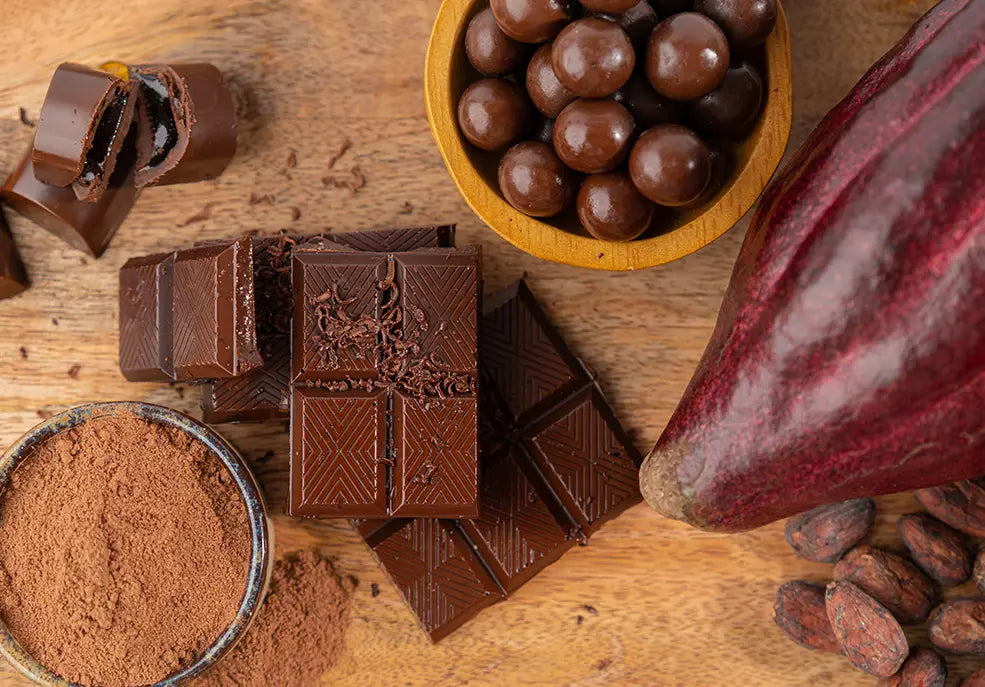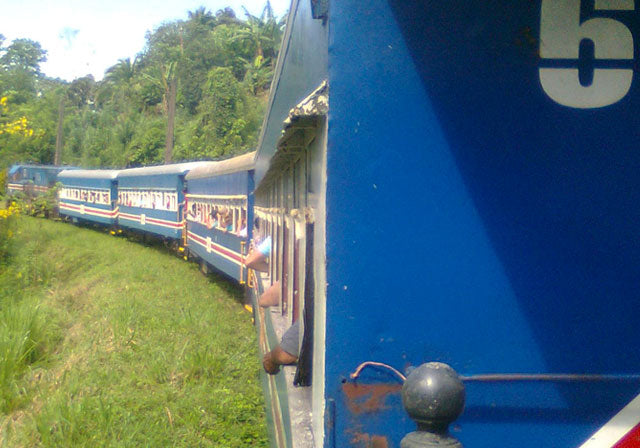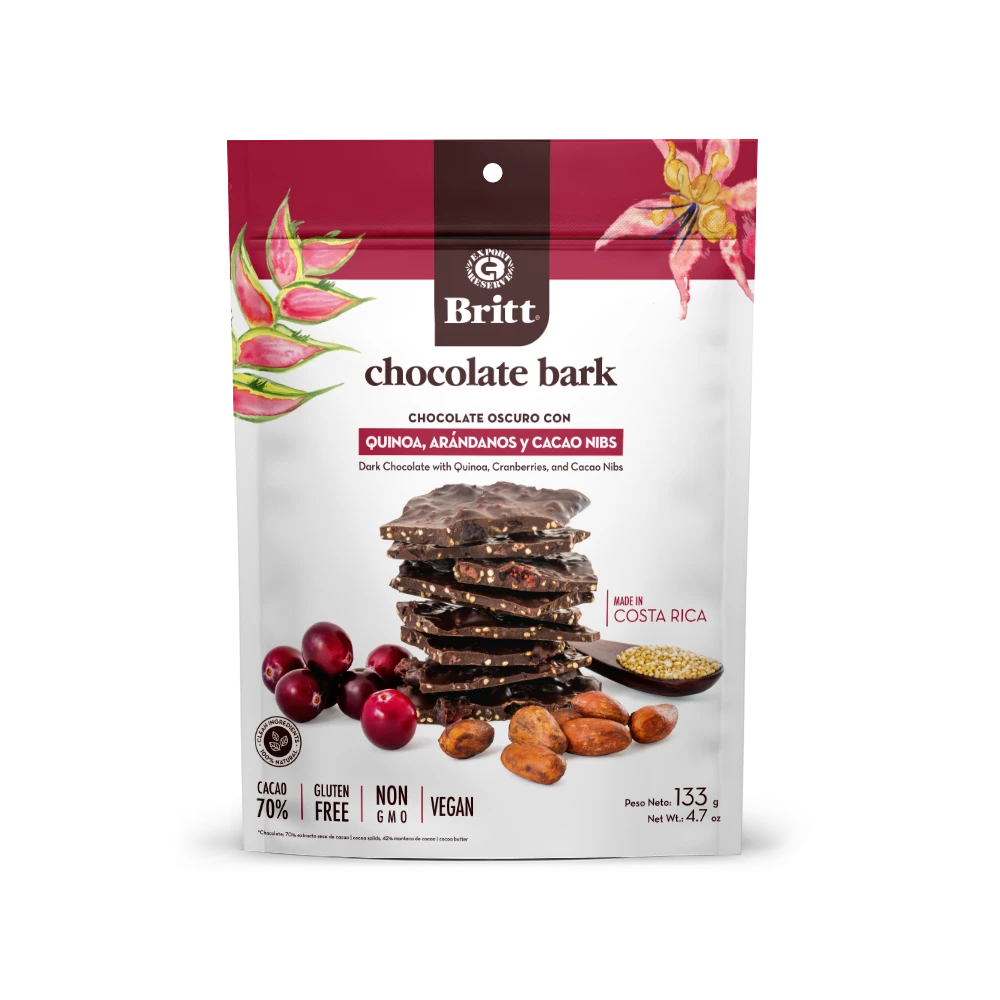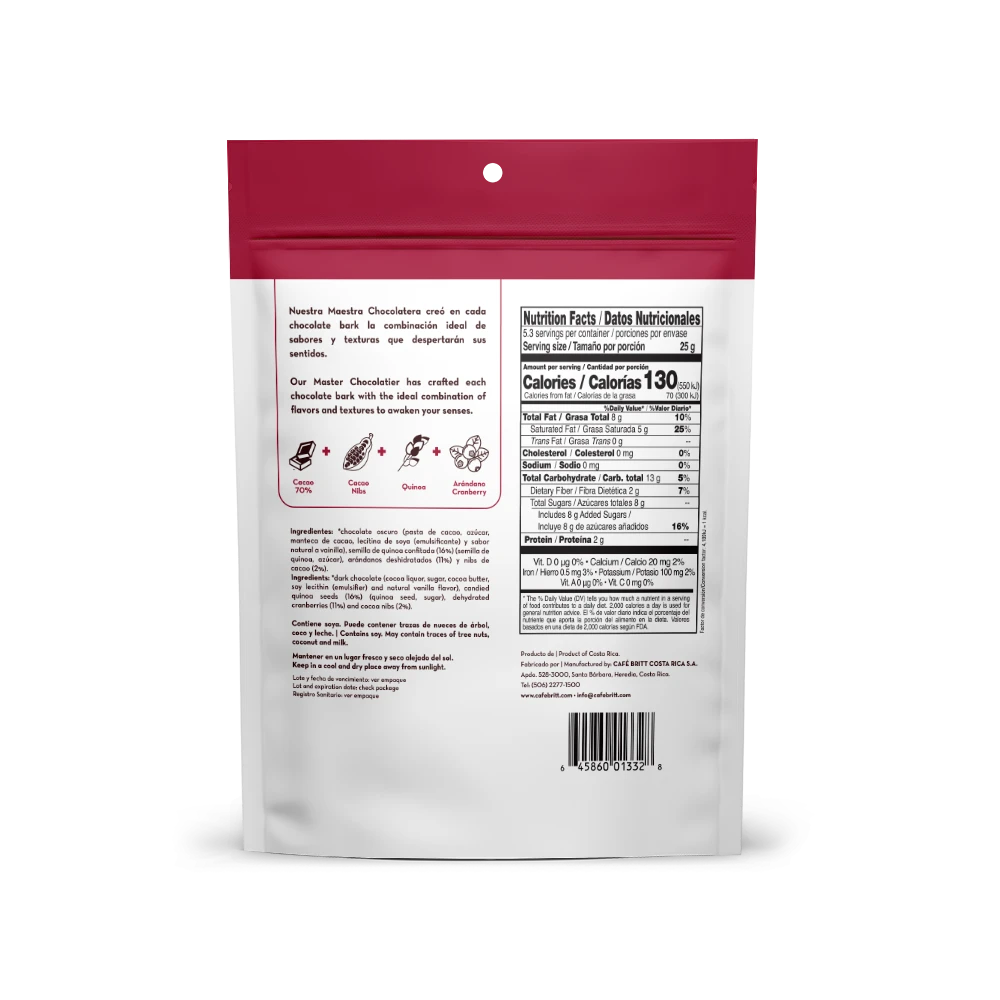THE YEAR OF THE CACAO BEAN

That’s right, cocoa. True, we’ve made a name for ourselves off the coffee bean. But you really love our chocolates, too. And we’re about to give you more of them.
In fact, 2006 will be the “Year of the Cocoa Bean” at Café Britt. In the works is a certified-organic version of the dark-chocolate-covered coffee beans we introduced in 1998. We’re also working on some amazing new additions to our growing family of chocolate and tropical fruit creations. We’re pretty excited about it. How about chocolate covered banana?
Café Britt is no newcomer to the gourmet chocolate business. My first export partner was based in Ecuador, a country that remains a leading exporter of fine cocoa. I was married in a cocoa producing town in rural Ecuador in the zone of Arriba cocoa.
Thirty years have gone by, and now we’re producing our own gourmet chocolates in both Costa Rica and Peru. We’ll also buy from Ecuador as our product line expands.
Costa Rica used to be a big exporter of cocoa, a funny looking crop produced inside pods that grow curiously along the trunks of cacao trees. It’s a tropical crop that thrives on torrential rainfall, heat and humidity, but in most cocoa-producing counties, the pods are harvested during the dry season.
In Costa Rica, cocoa is a rainy-season crop. It’s harvested when the country’s rainy season is in full swing.
Now, that’s just fine for the mosquitoes like mites – that’s right, mosquitoes – that pollinate cocoa. But all that moisture created a prime breeding ground for a fungus that attacks the pods just as they ripen. The fungus wiped out entire cocoa farms, which were replanted with another crop that thrives in moisture and humidity – bananas.
Today, most of what little cocoa is still produced in Costa Rica grows in the south-Caribbean Bribri region. And it’s pretty special stuff.
Bribri tribal growers cultivate the some of the same varieties grown by the ancient Maya. These are prime varieties, valued for their nutlike flavor and strong aroma. These are the varieties used in both our Costa Rican and Peruvian chocolates.
We carefully ferment the beans, grind them finely, add plenty of rich cocoa butter, and just enough sugar. The result is a creamy, flavorful chocolate that melts in your mouth.
But, you know that already, because you’ve tasted it. And wait ‘til you taste what’s coming.
- Tags: Chocolate 101


